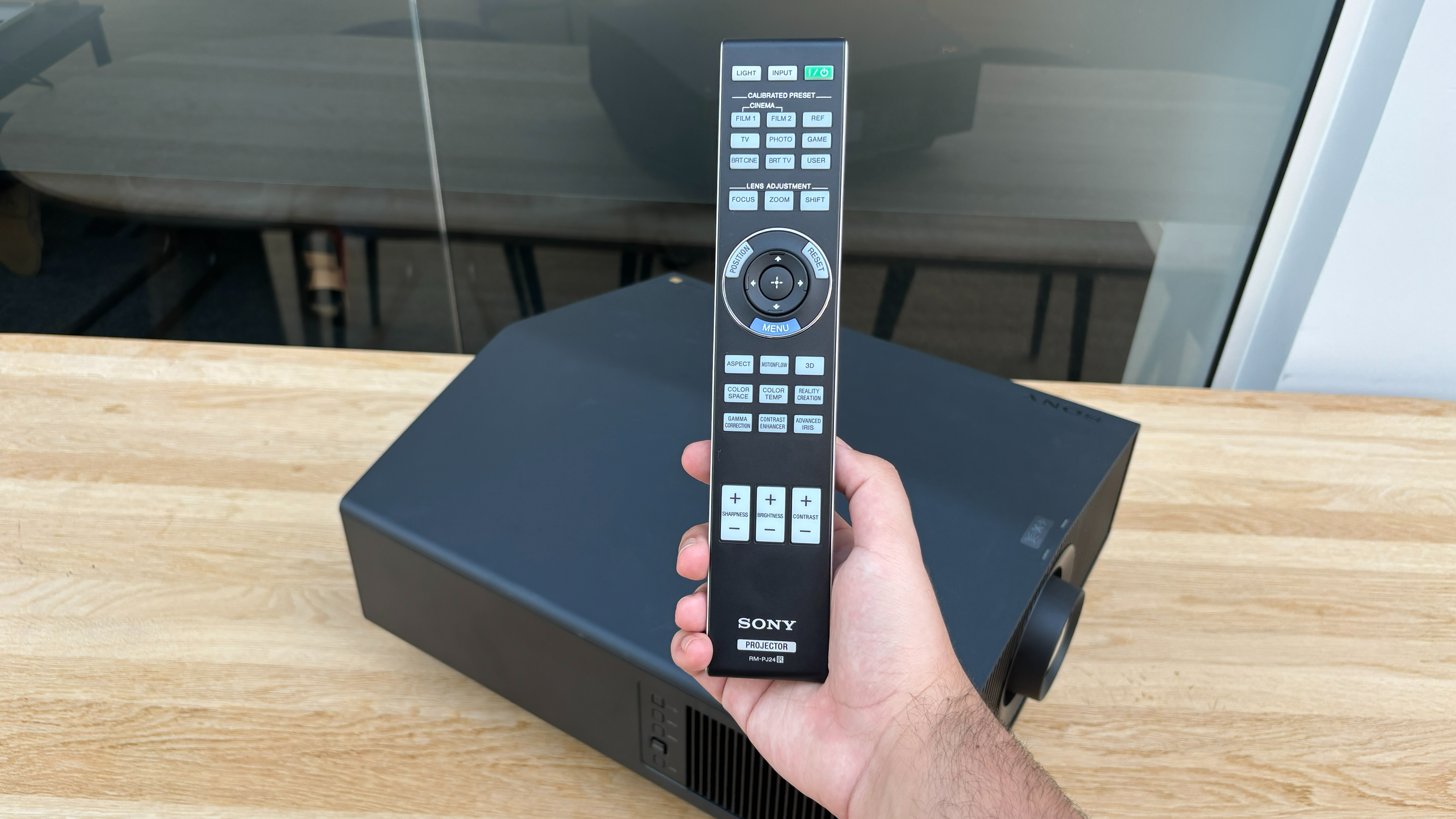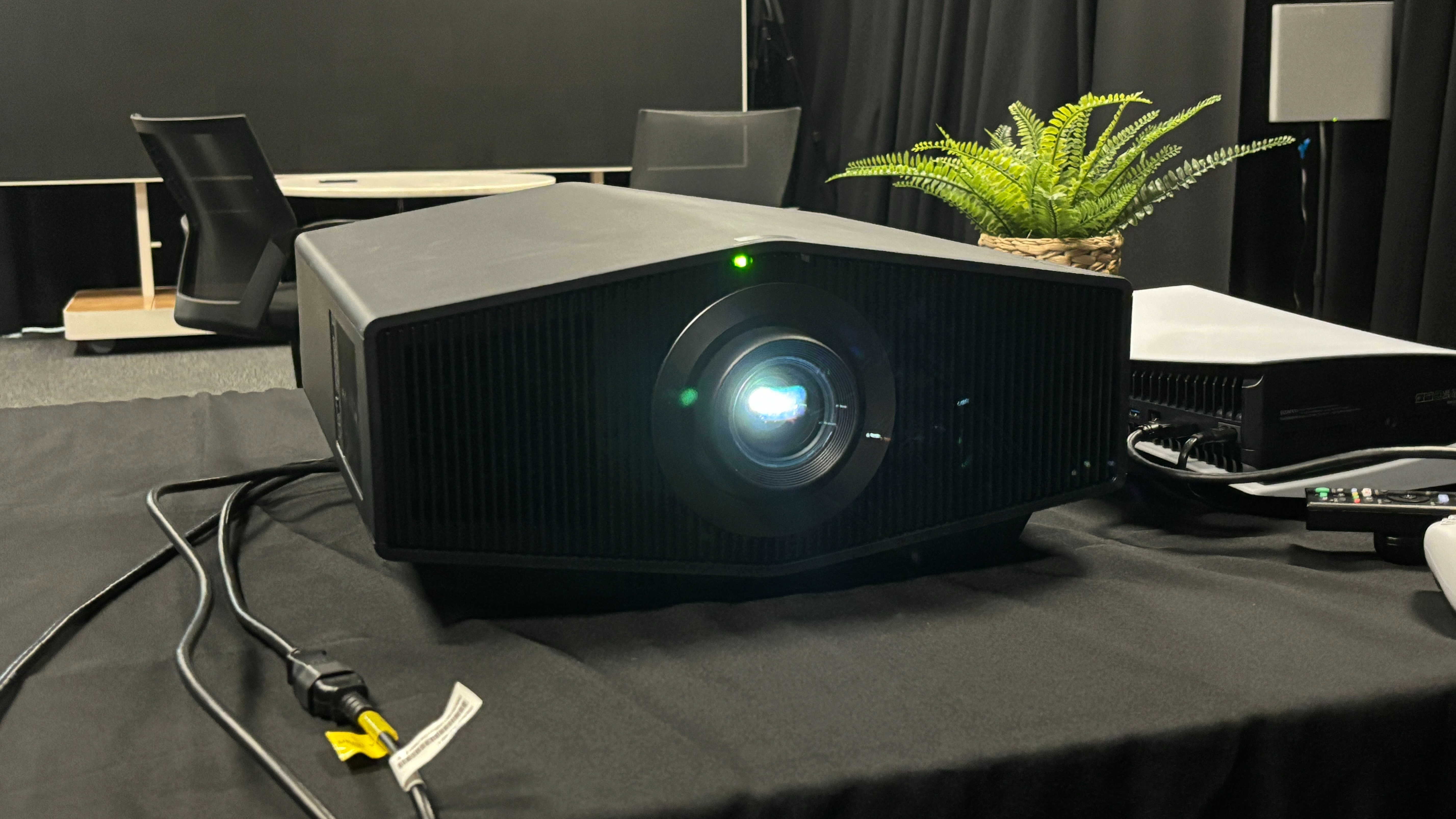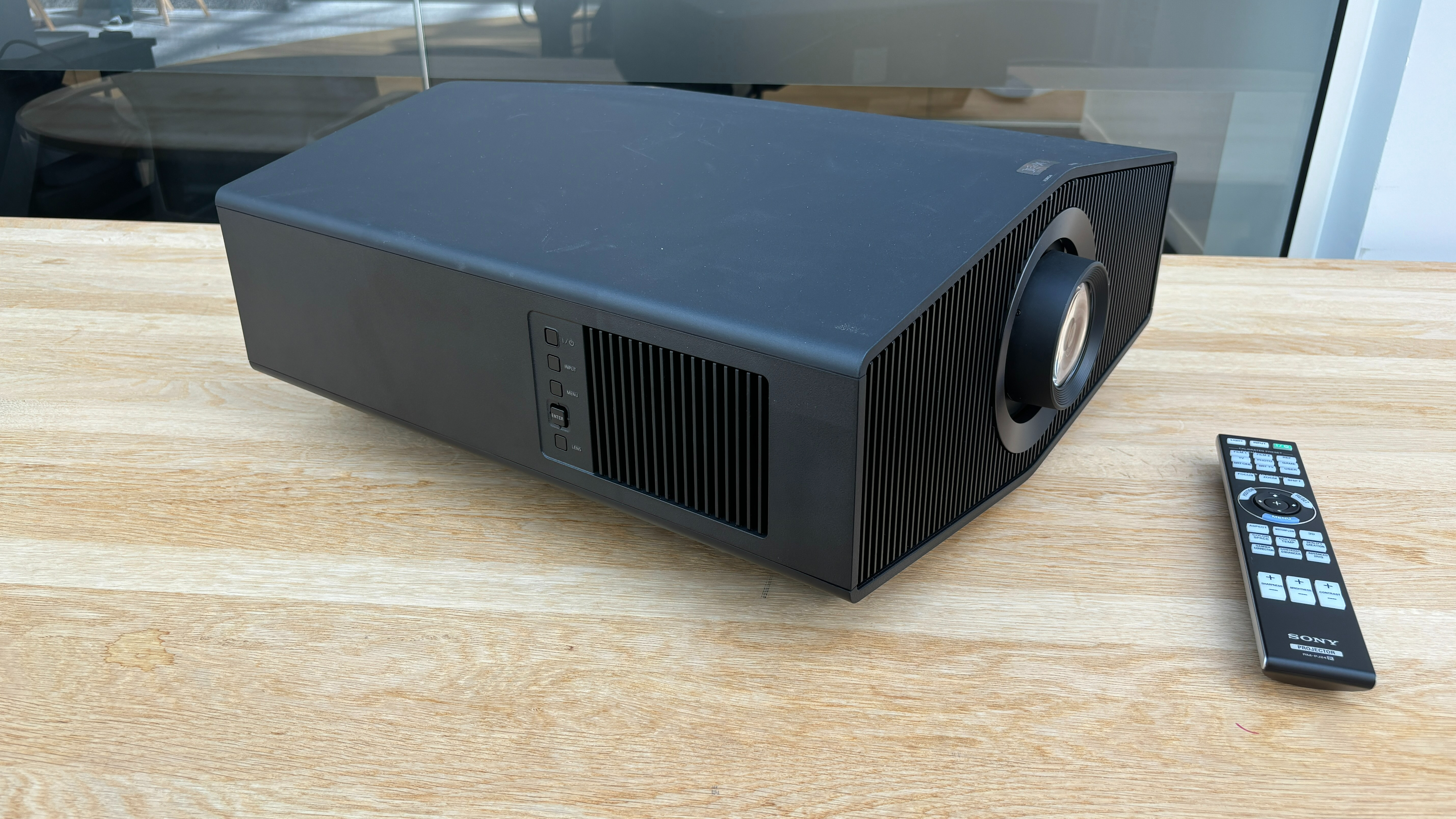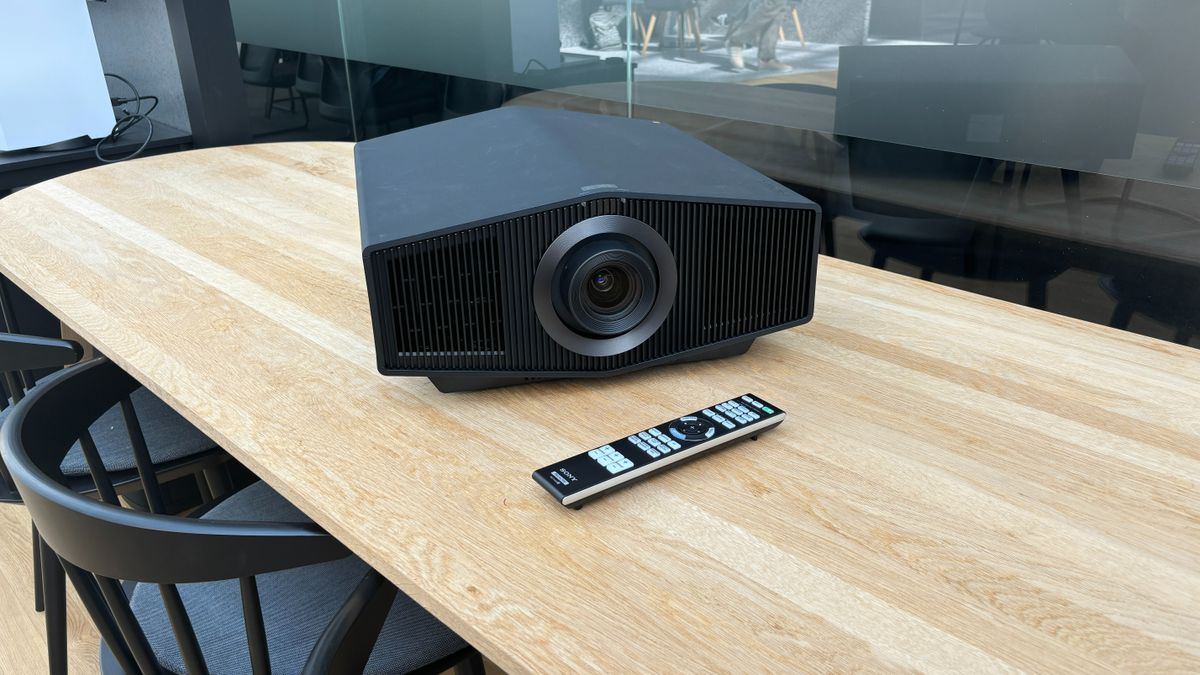Sony has already given its TV lineup an overhaul with the Bravia branding and “bring the cinema home” tagline, and now it’s turning its attention to its roster of high end projectors with a similar mission in mind. It’s launched two new projectors; the Bravia Projector 9 and Bravia Projector 8, and we were treated to a demo of the latest flagship model during a recent trip to Sony’s UK headquarters in Weybridge.
The Bravia Projector 9 – not to be confused with the Bravia 9 Mini LED TV – is a new step-up model from the Award-winning and much beloved VPL-XW7000ES, so expectations were immediately high; meanwhile the Bravia Projector 8 is more of a direct replacement with a handful of intriguing updates.
You won’t find our final verdict here, though, as we’ll need to spend much more time with the Bravia Projector 9 in our own AV testing room to decide whether it could take the VPL7000ES’ place on the Awards list. Consider this our initial hands-on impression, with a full review coming later down the line.
Price and build
It should come as no surprise that the Bravia Projector 9 is an expensive piece of home cinema kit, considering the 7000ES cost £14,999 / $27,999 / AU$25,499 back when we reviewed it initially in 2022. The new Bravia projector is, of course, a step up from this and the price reflects that; those on strict budgets turn away now. It’s set to retail for £25,999 (roughly $34,000 / AU$50,500) when it launches in November of this year, which puts it directly on par with the latest JVC DLA-NZ900.
For your money, you get a projector that looks identical to the outgoing VPL-XW7000ES, and Sony has been open in that it will be using the exact same chassis from the predecessor for this new model. This doesn’t concern us though, as the 7000ES was already a handsome unit to begin with, and Sony will also offer the Bravia 9 in either black or white finishes depending on your preference.
Sony has supposedly opted to keep this design for practicality reasons (although we’re sure it probably saved some development costs too), claiming that the chassis is smaller and lighter than other similar models on the market. It measures 21 x 46 x 51cm (hwd) and weighs just 14kg; for reference, the JVC DLA-NZ800 we recently reviewed weighs in at a heftier 23kg while also being slightly taller and noticeably wider. The backlit remote from the previous generation has also been carried across, which is fine by us as it was responsive and easy to use on both of the 2022 models.
Features

Sony appears to have implemented some noteworthy upgrades over the Sony XPL-XW7000ES, which is to be expected considering this is a step-up model. First and foremost it’s using Sony’s version Liquid Crystal on Silicon (LCoS) projection technology titled SXRD. This projection tech combines many of the positive aspects of LCD and DLP projection in that it uses the reflective method leveraged by DLP but using crystals found in LCD projectors to block light instead of a colour wheel.
While the light source tech is familiar, the Bravia Projector 9 is brighter than the VPL-XW7000ES, with this new model reaching a claimed 3400 lumens; 200 lumens brighter than its predecessor. Furthermore, Sony is carrying across the 70mm Advanced Auto Crisp Lens across from the XW7000ES, with motorised functionality for zoom, shift and focus; though it’s now added digital keystone correction into the mix for those looking to install this projector in rooms with less than ideal positioning – Sony has already promised that this feature won’t impact picture quality to a great extent, but we’ll have to test that later down the line.
The biggest news about the internal components of this new projector is that Sony has bought across the XR Processor from its TVs, this time with a specific XR Processor for Projector version. Paired with the light source, Sony has managed to implement some of its propriety picture systems from its TVs onto this new projector.
These include XR Dynamic Tone Mapping which enhances contrast, HDR performance and conversion of SDR content into HDR, XR Deep Black which helps to solidify black depths without compromising overall colour volume and highlights, and XR Triluminos Pro which enhances colour vibrancy and saturation. You’ll also find XR Clear Image for boosting texture details, reducing noise and upscaling low resolution content.
Sony cites other benefits of using the XR Processor too, including improved depth mapping for a more three dimensional image and focal point recognition which can identify which parts of the scene are designed to draw the eye and enhance that part of the image specifically. The use of the XR Processor also ties into Sony’s current ethos of how it creates the content, the cameras used to shoot the content, the screens the content is edited on and the screens we use to view the content; meaning it’s able to capture the creator’s original intent during the final presentation.
Finally, we move onto connectivity; and Sony has fixed one of our main criticisms of the previous generation projectors by including HDMI 2.1 connectivity on the Bravia 9. There are still only two sockets, but both support 4K/120Hz gaming with ALLM and a claimed input lag of 12ms. The trade off is that these projectors no longer support 3D with no port for the external transmitter to be found.
Picture

Here is where we need to reiterate that our opinions on the picture performance of this new projector are purely based on our first impressions and are by no means final; we’ll need to wait until the Bravia Projector 9 lands in our home cinema testing room to form a final opinion. That being said, we were shown a few movie clips, trailers and demo materials in order to gauge what this projector is capable of, and the first impressions are very positive.
The outgoing VPL-XW7000ES was already immensely talented when it came to contrast and solidity, and the Bravia 9 seems to carry forth this trend with enhancements to each picture aspect. With the trailer for Ghostbusters: Frozen Empire the Bravia 9 delivered a balanced yet striking picture, ensuring everything looked natural and engaging in equal measures. Skin and environmental details were packed with details, while edges appeared crisp and well defined without veering into cardboard cutout territory.
Switching to a clip from Spider-Man: Across The Spider-Verse (an absolute gem of an animated film if you somehow haven’t already seen it), we watch a colourful and bombastic chase sequence of Spider-Men swinging around from hundreds of different dimensions. Despite there being an immense number of fast moving subjects on screen, and this film having a unique gimmick of some characters moving at unusual frame rates, the projector didn’t appear to flinch when it came to motion handling.
It also presented the sequence with rich, bold colours that didn’t appear to be over saturated to our eye, despite this being a fairly vivid animated sequence. On the flip side of this, we also noticed how convincing the black depths of this projector appear during this sequence. The black portion of the titular hero’s black and red costume is presented with excellent depth and solidity, without sacrificing the colour volume of the surrounding red portions.
We were also shown various generic demo reels with landscape shots and a montage-style video of a wedding, and everything appeared to be consistently detailed, rich and authentic, though we’re keen to see what this projector is really capable of later down the line.
Early verdict

It’s too early to give the Bravia Projector 9 a star rating quite yet, but the short demo we had with the upcoming high-end beamer left us feeling rather eager to see what else it’s capable of.
While it may not look like anything new on the outside, the upgraded processor and new picture features certainly appear to give this new flagship projector a boost in the picture department, with the inclusion of HDMI 2.1 being the cherry on top. Stay posted for our full review later this year to see if this projector is truly worth the admittedly rather steep asking price.
MORE:
Read our full Sony XW-7000ES projector review
As well as our JVC DLA-NZ800 review
And check out our picks for the best projectors

